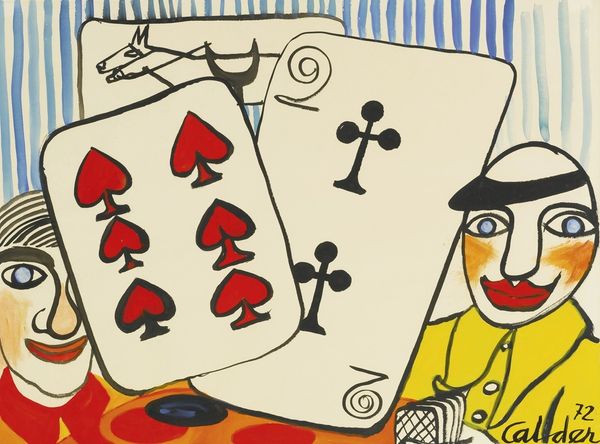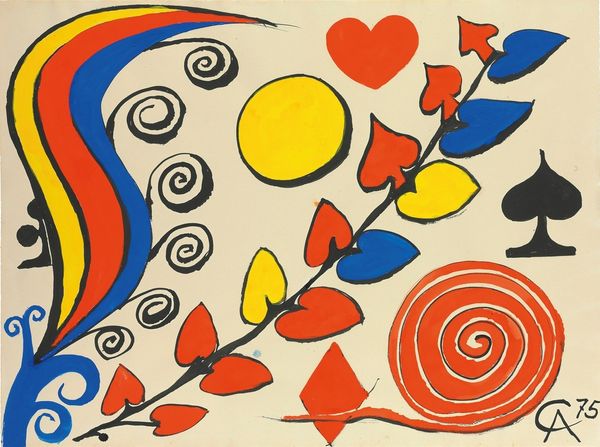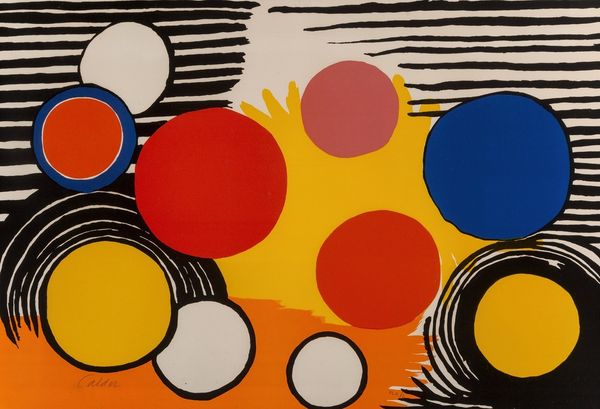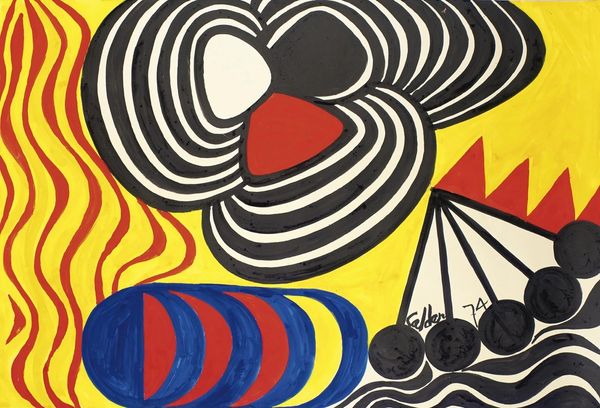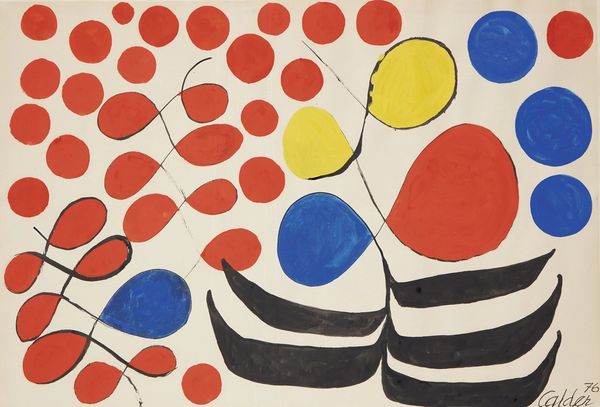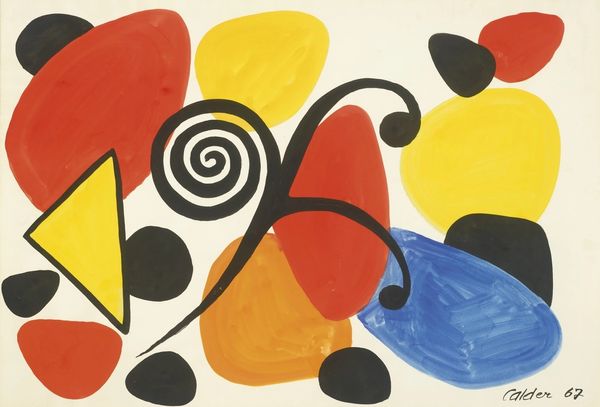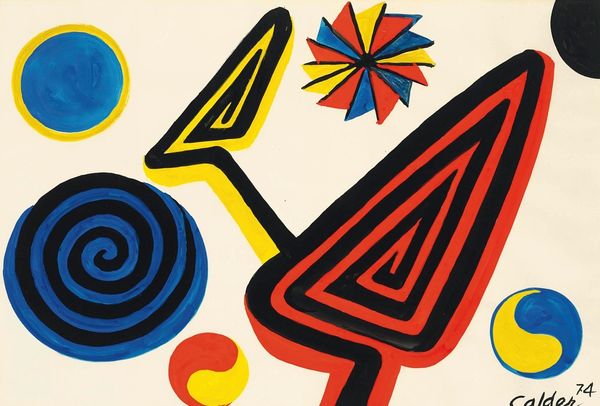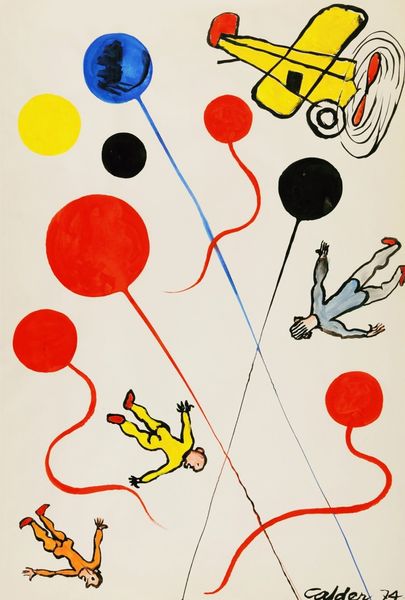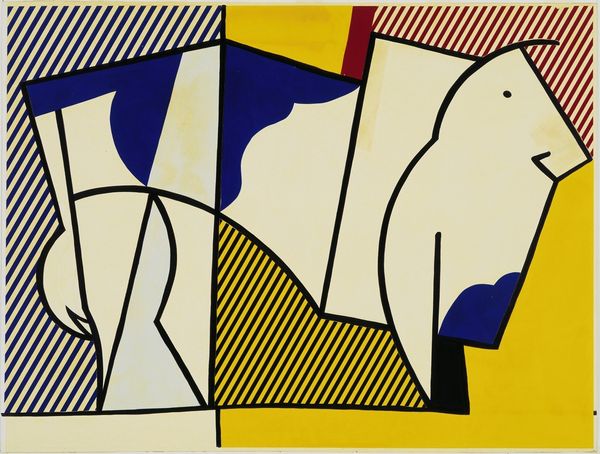
Copyright: Modern Artists: Artvee
Editor: Here we have Alexander Calder’s "Pique et Coeur," from 1971, done in acrylic paint. I am struck by the playful juxtaposition of simple shapes forming what appears to be a rather intense game of cards. What stands out to you about this piece? Curator: The symbolism jumps out immediately. Look at how Calder reduces the human figures to cartoonish, almost archetypal forms. What do the stark contrasts in color, and the flattening of space evoke for you? Editor: I see the colors and flattened space, along with those big, bold outlines that I feel contribute to the overall feeling of intensity, which I found kind of humorous. Curator: Exactly! Now consider the cultural context. Games of chance have always been fertile ground for allegories about fate, risk, and the human condition. Do you think Calder is just representing figures playing, or is he looking to comment on luck and social tension? What can you say about how people engage with these elements symbolically? Editor: I hadn't thought about luck and social tension; I was mostly caught up in the immediate aesthetic of it all. I guess it can be both: seemingly lighthearted while hinting at deeper meanings...the cards themselves being symbols with rich histories, beyond just entertainment. Curator: Indeed, the heart, the spade—these are potent symbols with deep roots in Western culture, representing love, loss, power, even death. Calder, perhaps through this almost childlike style, unlocks these potent ideas from our collective visual memory. It almost feels…ritualistic. What do you take away from the artwork after our discussion? Editor: That an artwork may seem happy or simple at first, can still communicate powerful ideas. It definitely inspires me to examine cultural memory, even in a whimsical style such as Calder's.
Comments
No comments
Be the first to comment and join the conversation on the ultimate creative platform.
